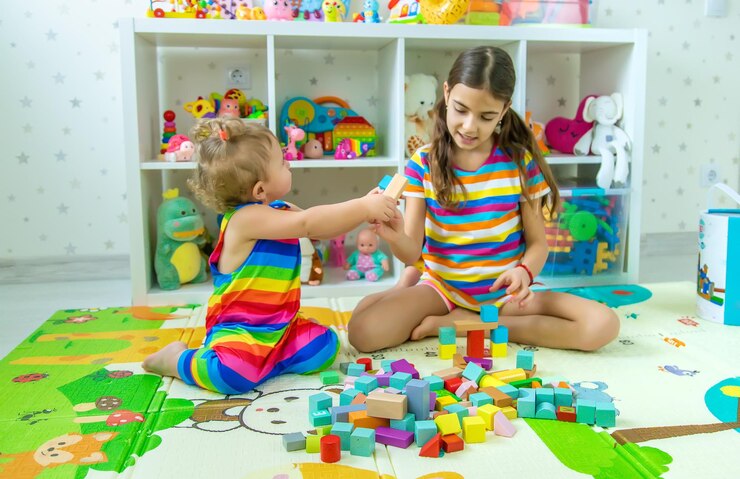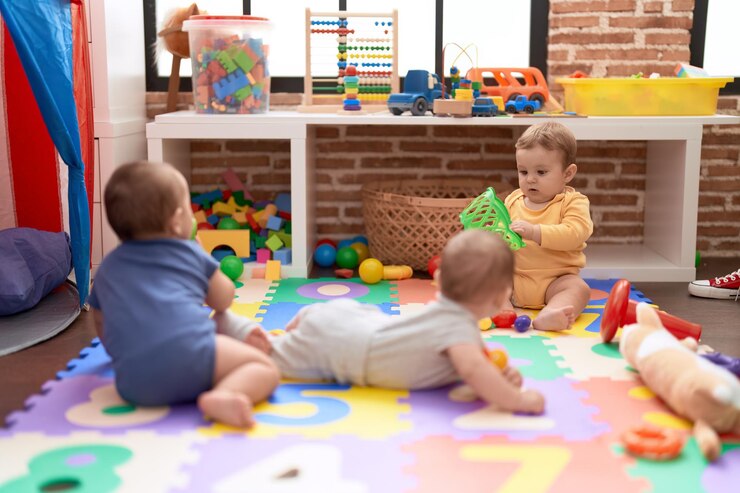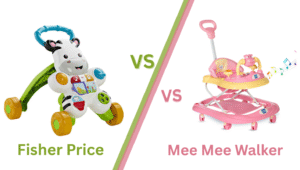When it comes to the development and well-being of your baby, choosing the right equipment is crucial. Two popular products parents often consider are baby walker vs activity center. Both are designed to entertain and aid in your baby’s physical and cognitive development, but they serve different purposes and come with unique features. In this guide, we’ll break down the differences between these two options, helping you decide which is the best fit for your little one in 2025.
What is a Baby Walker? (baby walker vs activity center)

A baby walker is a mobility tool designed for babies who are not yet walking on their own but are starting to stand and move around. It typically consists of a seat supported by a frame with wheels that allow the baby to push themselves around. Some walkers come with additional features like an activity tray or toys to keep your baby entertained while they move.check out Best Baby Walkers with Music and Toys in 2025
Pros of Baby Walkers:
- Promotes Mobility: A baby walker encourages babies to practice standing, scooting, and moving around, helping them build leg muscles and coordination.
- Entertainment: Many baby walkers come with activity trays featuring toys, music, and lights, keeping your baby entertained while they explore.
- Independence: With the support of the walker, your baby can explore different parts of the house and engage with their surroundings more freely.
- Adjustable Height: As your baby grows, many walkers allow you to adjust the seat height to provide a better fit.
Cons of Baby Walkers:
- Safety Concerns: Baby walkers have been associated with accidents like falls down stairs or tipping over. It’s essential to use them under supervision at all times.
- Delayed Walking Development: Some studies suggest that walkers may delay a baby’s ability to learn how to walk independently, as they don’t get the same practice with balance and coordination.
- Limited Use: Once your baby starts walking, the walker becomes obsolete and may no longer be used.
What is an Activity Center? (baby walker vs activity center)

An activity center, also known as a play center or exersaucer, is a stationary toy designed to engage and stimulate a baby’s senses. It typically features a rotating seat surrounded by various toys, buttons, and activities that encourage motor skill development and cognitive growth.
Pros of Activity Centers:
- Safety: An activity center is stationary, which means there’s no risk of the baby moving around uncontrollably or falling.
- Motor Skill Development: The toys and activities in the center promote hand-eye coordination, fine motor skills, and cognitive development. Babies can interact with buttons, toys, mirrors, and more.
- Entertaining: The variety of toys and activities in an activity center keeps your baby engaged for longer periods, giving parents a break while ensuring their baby is entertained.
- Longer Use: Activity centers are designed to accommodate babies from around 4 to 12 months, and sometimes even longer, depending on the model. This makes them a more long-term investment than a baby walker.
Cons of Activity Centers:
- Limited Mobility: While activity centers are excellent for development, they don’t encourage mobility. Babies are confined to the stationary seat and can’t move around the house or practice standing and walking.
- Space Consumption: Activity centers can be bulky and take up significant space in your home, making them less ideal for smaller living areas.
- Can Be Expensive: High-quality activity centers, especially those with more advanced features, may come at a higher price point compared to basic walkers.
Baby Walker vs Activity Center: Key Differences
| Feature | Baby Walker | Activity Center |
|---|---|---|
| Mobility | Allows the baby to move around | Stationary, baby cannot move around |
| Safety | Requires supervision, prone to accidents like tipping and falling | Safe, stationary with no risk of falls |
| Development Focus | Encourages standing and mobility | Focuses on hand-eye coordination, fine motor skills, and sensory development |
| Age Range | Suitable for babies who can sit up unaided (around 6-12 months) | Suitable for babies who can support their own head (around 4-12 months) |
| Entertainment Features | Often includes music, lights, and toys | Includes interactive toys, buttons, mirrors, and lights |
| Storage | Easy to store and move around | Bulky and may require more space for storage |
| Cost | Affordable, often under ₹3000 | Can be more expensive, depending on the model |
| Duration of Use | Short-term, until baby starts walking independently | Longer-term, can be used for several months |
Which One is Right for Your Baby? (baby walker vs activity center)

When to Choose a Baby Walker
A baby walker can be a good choice if:
- You want to help your baby practice standing, moving, and building leg strength.
- You are looking for an option to keep your baby entertained and occupied with toys while they move around the house.
- You have a relatively safe, baby-proofed environment where your baby can use the walker under constant supervision.
However,If you’ve decided a baby walker fits your baby’s stage, check out our latest guide to the best push walkers for babies in India (2025) to find safe and developmental-friendly options.
When to Choose an Activity Center
An activity center is an ideal choice if:
- You want to promote cognitive and motor development while keeping your baby safe and engaged in one spot.
- You need a stationary option to keep your baby entertained while you take care of other tasks.
- You’re looking for something that will last a little longer as your baby grows.
If your home is smaller or you have limited space, you may want to consider a compact activity center.
FAQ: Baby Walker vs Activity Center
1. Are baby walkers safe for my baby?
While baby walkers are popular, they can be dangerous if not used with caution. Ensure that your baby is always supervised, and use the walker in a safe, baby-proofed environment. Consider safety features like anti-slip wheels and safety locks.
2. Do activity centers help babies walk?
No, activity centers do not encourage walking. They are designed to help with motor skill development, sensory play, and building coordination but are stationary and do not promote mobility like a walker does.
3. At what age can I start using a baby walker?
A baby walker can generally be used when your baby is able to sit up without support (usually around 6 months). Make sure to choose a walker that is age-appropriate and has the right features for your baby.
4. Can my baby use an activity center until they start walking?
Yes, most activity centers are suitable for babies until they are around 12 months old, and some even have features that grow with your baby, such as adjustable height or removable toys.
5. Which is better: a baby walker or activity center?
There is no one-size-fits-all answer. A baby walker is great for mobility and exploration, while an activity center is ideal for developing fine motor skills and keeping your baby entertained. The best option depends on your baby’s developmental stage and your priorities.
Conclusion (Baby Walker vs Activity Center)
Both baby walker vs activity center play an essential role in your baby’s development, but they serve different purposes. A baby walker encourages mobility and exploration, while an activity center helps promote cognitive development and coordination. In 2025, both options come with improved safety features and are designed to suit different needs. Consider your baby’s developmental stage, safety concerns, and available space when choosing between the two.
Whichever option you choose, ensure that it aligns with your baby’s developmental milestones and your home environment for a safe and enjoyable experience.



